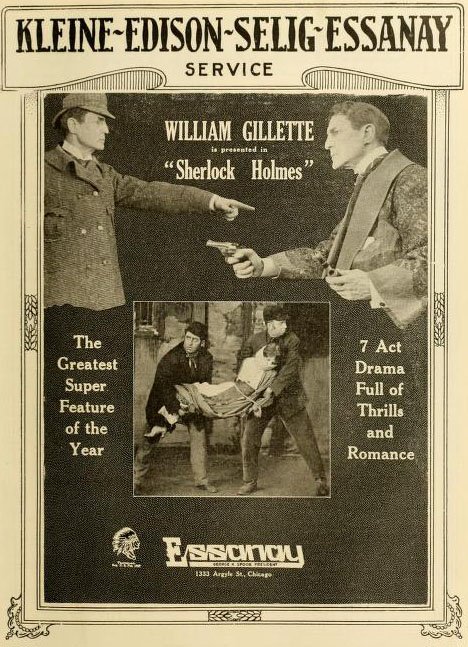
The first Sherlock Holmes story, “A Study in Scarlet,” was published in The Strand magazine in 1887, with regular stories beginning to appear in 1891. The adventures of the world’s only consulting detective were an instant hit. In 1899, William Gillette was playing him on stage and by 1900 D.W. Griffith produced a short for Mutoscope. The ‘plot’ of the one-minute drama makes no sense but it does underscore the intense and immediate popularity of Holmes (Gillette would also play Holmes in the 1916 silent film).
“To a great mind, nothing is little.” — A Study in Scarlet
His creator, Arthur Conan Doyle, decided to “kill off” Holmes in 1893, a move that crushed loyal fans. Some were even known to wear black armbands to signify their mourning of the great detective. A new Sherlock story, The Hound of the Baskervilles, was published until 1901, though the action takes place before Holmes’ death (It would be 1903 before Conan Doyle finally resurrected his beloved creation with the story “The Empty House”).
“As a rule, the more bizarre a thing is the less mysterious it proves to be.” — The Red-Headed League
Indeed, many contemporary readers truly believed that Holmes and Watson were real people, and that Conan Doyle was a literary agent, rather than the creator of these characters. Some fans play The Game, an ongoing literary analysis of the canon in order to show Holmes and Watson were real and explain away inconsistencies in the 56 stories and 4 novels.
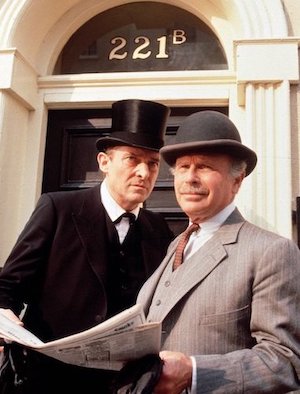
Either way, to this day, thousands of letters are delivered each year to 221B Baker Street—the address of the flat shared by Holmes and Watson, and now the location of the Sherlock Holmes Museum. I myself called upon the pair, but they were unfortunately not home when I visited.
“But there are always some lunatics about. It would be a dull world without them.” — The Adventures of the Three Gables
The Guinness Book of World Records holds Sherlock Holmes to be the most depicted character to ever appear on film. There are endless adaptations, pastiches, and parodies, in print, on the big screen and on the small screen. Here are a few to add to your queue.
“The game is afoot!” — The Adventure of Abbey Grange
The Adventures of Sherlock Holmes (1985), The Casebook of Sherlock Holmes (1986) and The Return of Sherlock Holmes (1991)
I grew up with Jeremy Brett as Sherlock Holmes, and he will always be my favorite. He embodies Holmes through and through, and this Granada production has been hailed as the best and most accurate adaptations ever made, and I have to agree.
The canonical details all appear in these episodes—Holmes is impetuous but brilliant. Watson is not portrayed as a bumbling fool, but as the capable doctor and veteran that he is. Both characters are inherently important to each story’s outcome. These adventures will make you want to get a tweed cape, a bowler hat, and run to Kings Cross for the next train to Dartmoor. They are truly a joy.
“Crime is common. Logic is rare.” — The Adventure of the Copper Beeches
Sherlock Holmes (2009) and Sherlock Holmes: A Game of Shadows (2011)
Putting a Victorian detective movie in the hands of British action director wasn’t an obvious choice, but it definitely works. Guy Ritchie leans on the (canonical) pugilistic aspects and reckless impulses of Holmes for these two films. The central mysteries are not based on original stories, but they are rooted in historic events.
Robert Downey, Jr. and Jude Law make an excellent crime-fighting pair, and with appearances by Irene Adler (Rachel McAdams), Mary Morstan (Kelly Reilly), and Professor Moriarty (Jared Harris), there is plenty for even the most traditional Sherlock fan.
“Education never ends, Watson. It is a series of lessons with the greatest for the last.” — The Adventure of the Red Circle
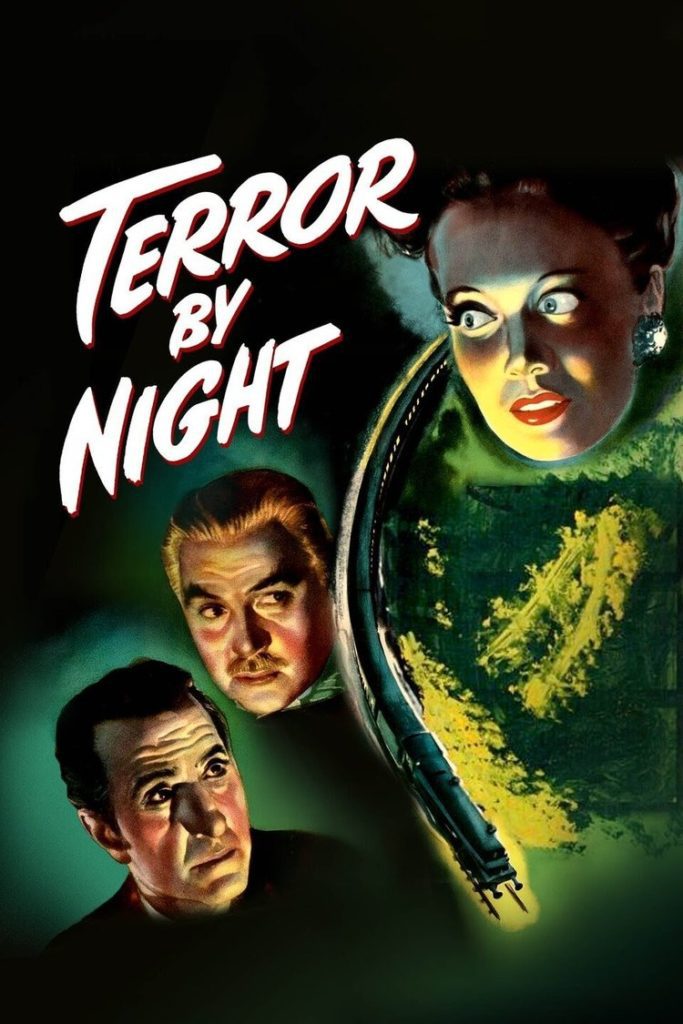
Sherlock Holmes: Terror by Night (1946)
Perhaps it was the onset of World War II that prompted the country to revisit known, comfortable characters. In 1939, a series of Holmes films starring Basil Rathbone and Nigel Bruce began. The plots don’t really follow any of the original stories and they are set in the 1940s. The movies resemble film noirs, with Sherlock as the hard-boiled detective and Watson as the clueless sidekick.
Purists might not recognize much, but there’s no denying they are fun, entertaining adventures. Terror By Night includes a diamond necklace, a coffin, and a murder all on a train steaming its way to Scotland.
“The world is full of obvious things which nobody by any chance ever observes.” — The Hound of the Baskervilles
Murder Rooms: The Dark Beginnings of Sherlock Holmes (2001)
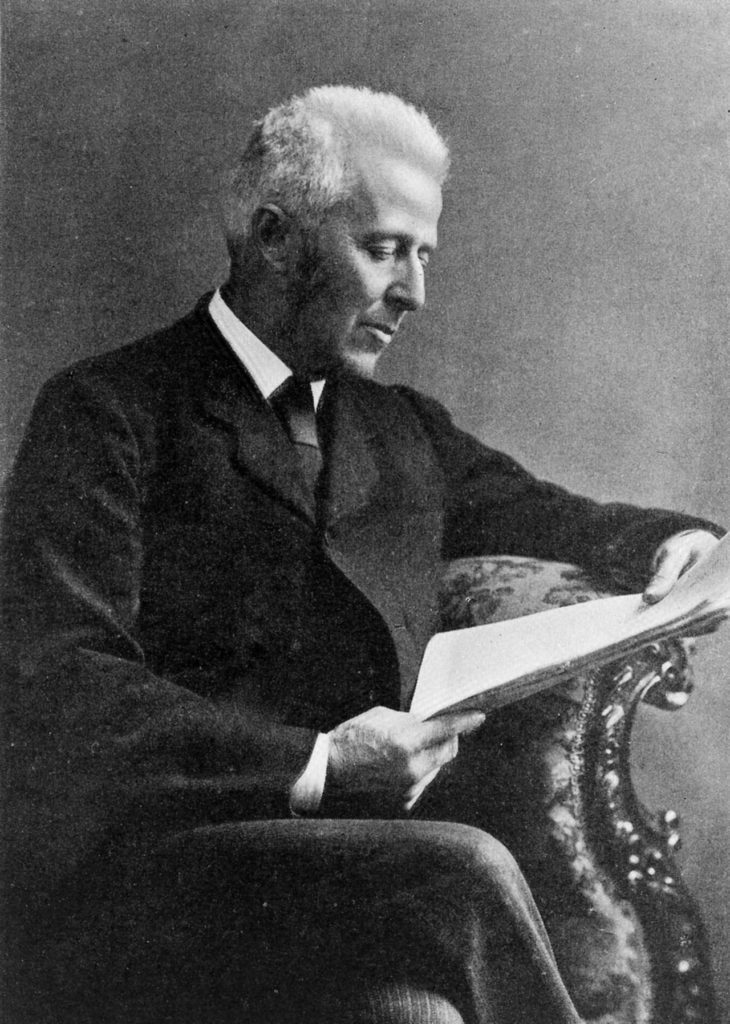 Dr. Joseph Bell was a pioneering doctor and professor at the University of Edinburgh. Among other things, like being Queen Victoria’s personal surgeon, he became known to his students for being able to carefully observe and assess patients.
Dr. Joseph Bell was a pioneering doctor and professor at the University of Edinburgh. Among other things, like being Queen Victoria’s personal surgeon, he became known to his students for being able to carefully observe and assess patients.
During one demonstration, Bell questioned a patient, then explained his deductions. “You see, gentlemen,” he explained, “the man was a respectful man but did not remove his hat. They do not in the army, but he would have learned civilian’s ways had he been long discharged. He has an air of authority and he is obviously Scottish. As to Barbados, his complaint is elephantiasis, which is West Indian and not British, and the Scottish regiments are at present in that particular island.”
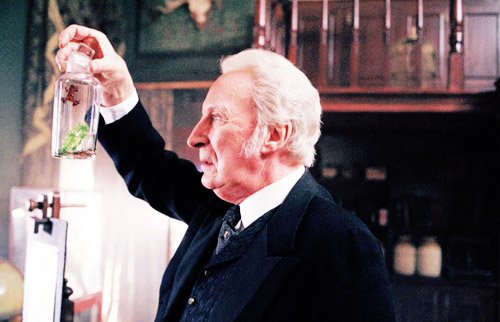
Conan Doyle was Bell’s student—medically and literary. When he published his first collection of Holmes stories, he dedicated them to Bell. He also wrote a Bell a personal note thanking him for his inspiration. This series uses the real life friendship of Bell and Conan Doyle and imagines them to be their own crime-fighting team. With Bell as the brilliant Sherlock and Conan Doyle as the astute chronicler, it’s easy to believe these adventures could have happened.
“It is a capital mistake to theorize before one has data. Insensibly one begins to twist facts to suit theories, instead of theories to suit facts.” — A Scandal in Bohemia
Mr. Holmes (2015)
Based on the novel A Slight Trick of the Mind, this film visits Sherlock Holmes in his later years, long retired from detecting. As he promised Watson, he has gone to South Downs to devote himself to beekeeping. With him is a live-in housekeeper and her precocious son who begs Mr. Holmes for stories of his adventures. As curmudgeonly as ever, he slowly warms to the boy and begins to recount the only mystery he couldn’t solve.
While technically not based on a canonical story, it feels like it could be. It’s beautifully shot and wonderfully acted—a perfect film for the Sherlock fan.
“You know my methods. Apply them. ” — The Sign of Four
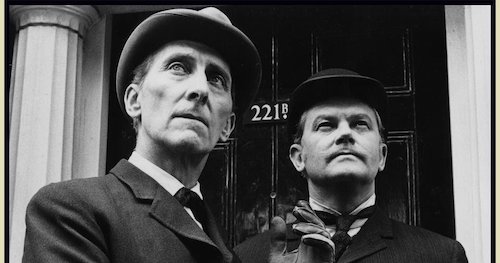 Sherlock Holmes: BBC (1964-65)
Sherlock Holmes: BBC (1964-65)
These Douglas Wilmer and Peter Cushing episodes became quick classics. Wilmer even appeared in a cameo of the Gatiss and Moffat edition.
Murder By Decree (1979)
The late great Christopher Plummer takes his turn as the great detective trying to catch Jack the Ripper. He’s assisted by James Mason as Watson.
Sherlock (2010-2017)
The series that made Benedict Cumberbatch a household name, it’s frenetic, cheeky, and smart.
Elementary (2012-2019)
Set in modern day New York City, Sherlock helps the police solve cases alongside Dr. Joan Watson.
Originally written for DVD Netflix
